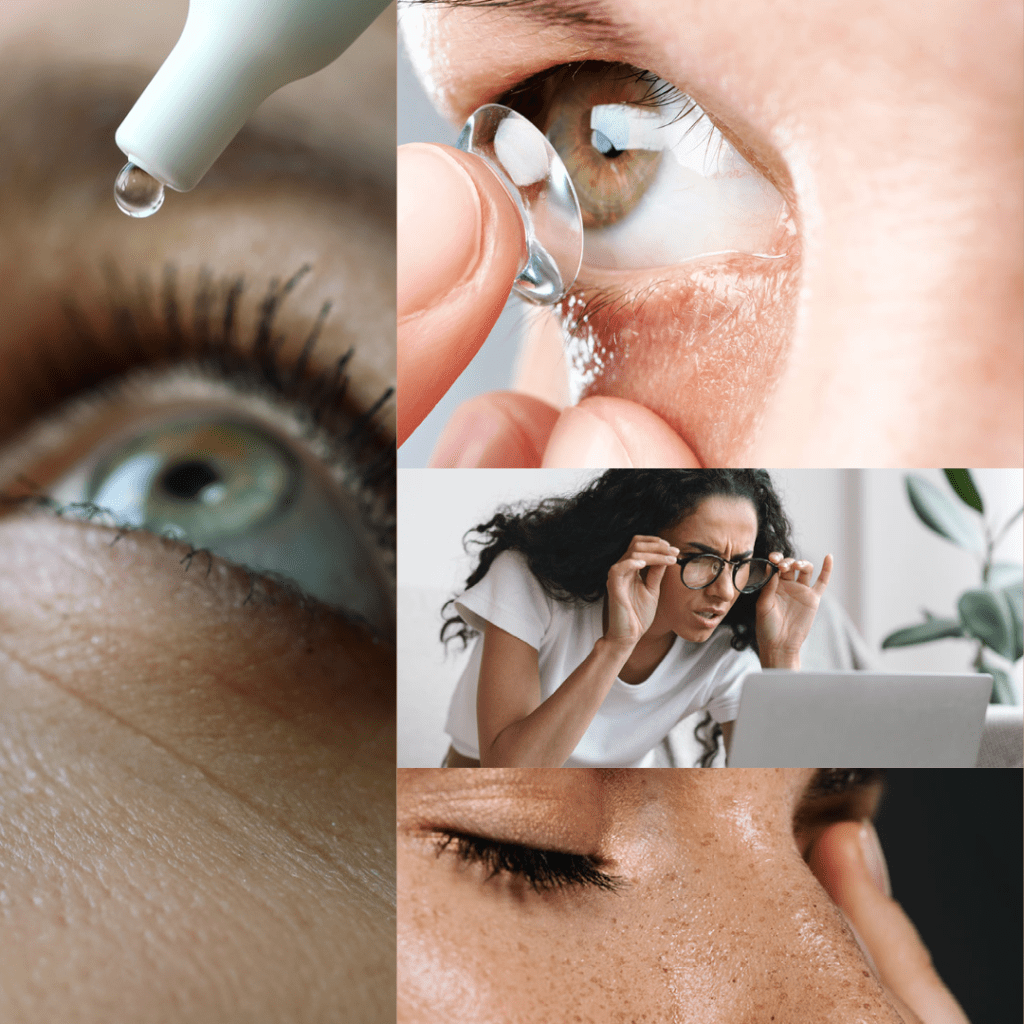During pregnancy, ocular changes are common. Pregnancy-induced changes in the eyes are usually reversible or return to normal after the pregnancy ends. Some cases, however, require treatment and management during or after pregnancy. Pregnancy induces changes in the eyes due to metabolic, hormonal, and immunologic changes. In general, the changes fall into two categories:
- Physiological: After pregnancy, changes in the body return to normal resulting from physiological changes
- Pathological: this can further be divided into:
- Pre-existing eye problems getting worse or better
- Emerging eye problems
PHYSIOLOGICAL EYE CONDITIONS
Women’s bodies undergo numerous changes during pregnancy. After delivery, these changes in the eyes disappear, and they do not cause permanent damage.

- Hyperpigmentation of the skin around the eyes. The condition may resolve spontaneously after pregnancy, but it may take some time.
- Changes in glass number: This is due to corneal changes. The fluid retention in the body can cause changes in the thickness and shape of the cornea leading to a change in glass number. This usually occurs in the second or third trimester and resolves after pregnancy. Therefore there is no need for new glasses or contact lenses. The variation in refraction throughout pregnancy also makes it unwise to undergo refractive surgery during pregnancy.
- IOP(Intra Ocular Pressure): Normal IOP is between 10-21 mm of Hg. Under the influence of progesterone there is usually a decrease in IOP by 2-3 mm of Hg. Which returns to baseline after pregnancy. This usually doesn’t cause any problem in women who had normal IOP before pregnancy.
- Dry eyes: This is a common problem. Women start feeling dryness in their eyes along with reflex tearing, redness, and gritty feeling. The use of lubricating eye drops alleviates these symptoms.
- Ptosis or drooping of upper eyelid: Hormonal changes and fluid accumulation in tissues of the eyelid cause drooping of the eyelid. After pregnancy, it usually goes away, but it may take a long time.
- Pregnancy-related contact lens intolerance: It may be necessary to delay contact lens prescriptions until several weeks after delivery.
Pathological conditions:
Pre-existing eye conditions getting worse or better
- Diabetic Retinopathy: Uncontrolled blood sugar during pregnancy can quickly make DR progress in patients who already had it before pregnancy. Women with diabetes who plan to become pregnant should have a dilated fundus examination prior to conception. Detailed eye and fundus examinations are also necessary at regular intervals thereafter. Pregnant women should have an eye exam during their first trimester, followed by re-examination depending on the amount of retinal changes. Follow up on mild-moderate changes every three to six months, while severe changes require re-examination within three months. The condition may require laser treatment if the disease is severe.
- CSCR (Central Serous Chorioretinopathy): Retinal detachment caused by serous fluid collecting underneath the retina.. Patient complaints of blurred vision in the center, distorted vision and/or central scotoma while the peripheral vision seems fine.
- Glaucoma: Due to the teratogenic effect of glaucoma medication, women who had glaucoma before pregnancy may be instructed to begin using new drops, reduce their medication dosage, or stop their medication altogether. Laser trabeculectomy can be performed in case of a severe rise in IOP during pregnancy.
- Uveitis or inflammation of the eye structures such as iris, ciliary body, choroid and retina. There is a decrease in the severity of autoimmune diseases such as non-infectious uveitis during pregnancy, especially from the second to third trimester.
EMERGING OCULAR CONDITIONS
1. Pre eclampsia and eclampsia: Usually occurs after the 20th week of pregnancy due to uncontrolled hypertension with systolic >140 and diastolic >90 mm of Hg. It can cause serious vision problems such as blurring, flashes of light, double vision, vision field defects, and even severe vision loss.
15% of patients with preeclampsia and eclampsia develop infarction in the parts of the brain such as the occipital and parietal lobe causing sudden vision loss or visual field defects. The recovery can take from a few days to several months postpartum
2. Clotting disorders: It is more likely for women with pre existing clotting problems such as antiphospholipid syndrome (APS) or disseminated intravascular coagulation (DIC) to develop clots in the vessels supplying the eye, leading to occlusion and bleeding inside the eye.
3. Graves’ disease: The most common cause of hyperthyroidism during pregnancy is Graves’ disease. Proptosis can occur unilaterally or bilaterally due to this condition. When Graves’ disease is present during pregnancy, it usually progresses during the first trimester, remits during the second and third trimesters, and then recurs after delivery. Some abnormal eye findings include eye stare, eyelid lag, proptosis, and extraocular muscle palsy.
4. Brain tumors: During pregnancy, preexisting pituitary gland tumors tend to grow more, and the growing tumor can compress the optic nerve, which transmits visual information from the eye to the brain. This can lead to vision loss, visual field defects, and even double vision.
5. Latent toxoplasmosis: There is a possibility that the latent can become active, resulting in inflammation and floaters inside the eye. A pregnant woman with an active infection should be monitored every three months, and her offspring should be followed up systematically.
CONCLUSION
It is not uncommon for women to experience eye problems during pregnancy. Most of the time, these changes are physiological and return to normal after pregnancy, but women with pre-existing diseases should seek treatment immediately if they experience blurry vision.
